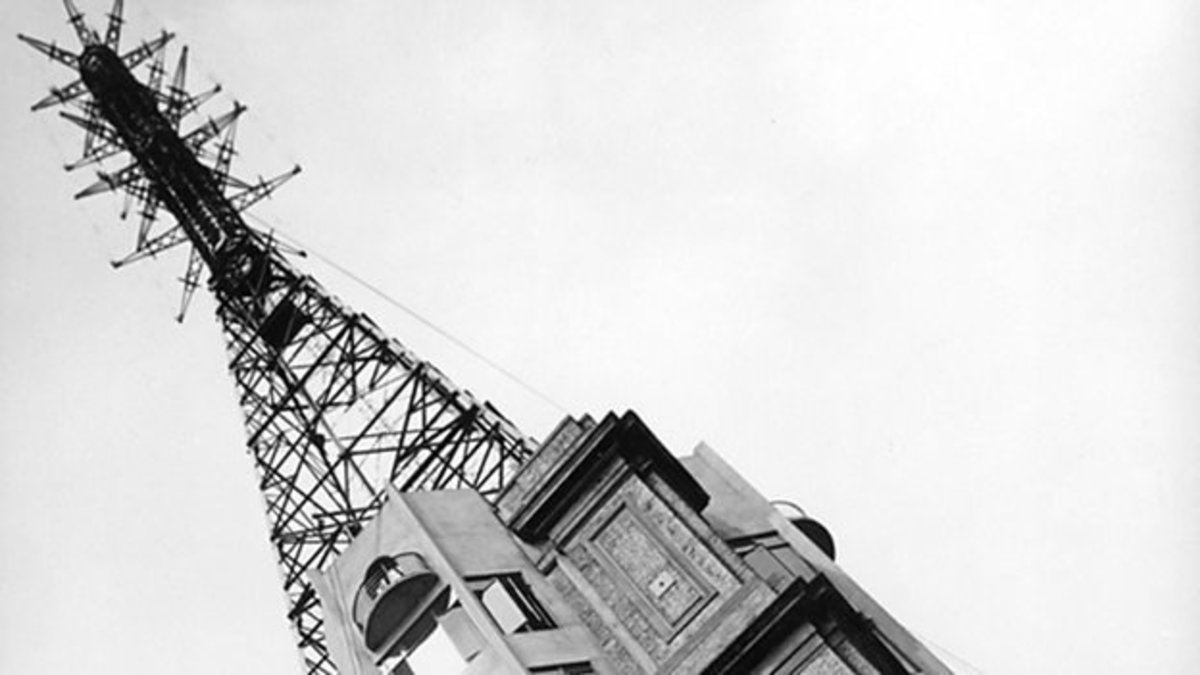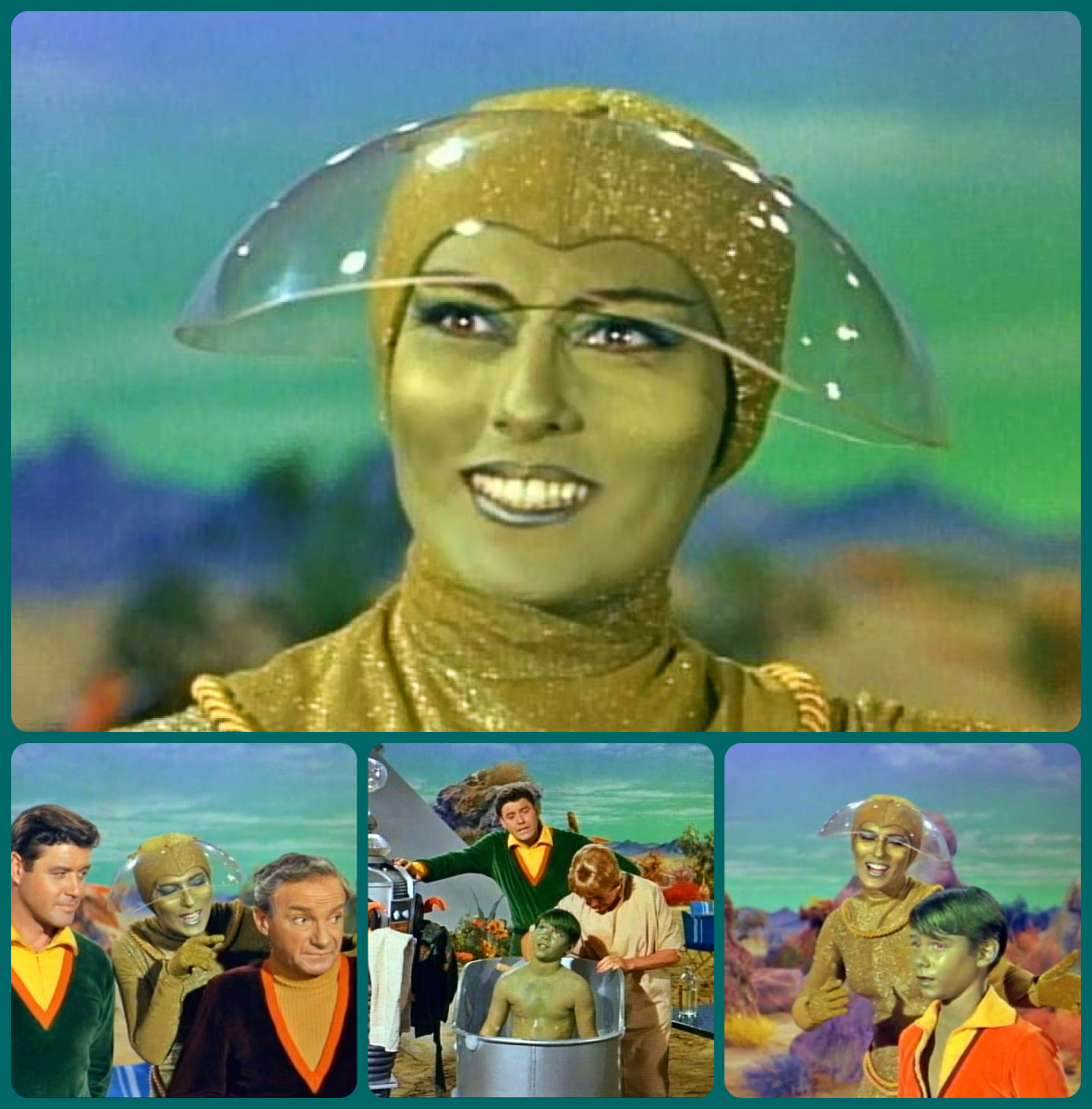The HISTORY of AMERICAN TELEVISION
How American TV came to be
The prototype of the modern television set was the Iconoscope, invented by Vladimir Zworkin in 1923. It was an amazing invention at the time, able to transmit an image recorded on a film camera to a big box with a picture tube in another room.
By the mid '20s, the first working TV cameras were invented, but they weren't marketed yet since there were still no workable television sets. The picture quality on those first televisions was barely watchable. However, many people predicted that television would be a growth industry once it was perfected and so began to prepare for it.
In the late 1920s and early 1930s, radio stations like WNBC were already devoting part of their studios as TV sound stages. They bought the cameras. They were just waiting for the big box with the picture tube to work properly.
In 1930, WNBC opened experimental TV station W2XBS to test out TV broadcasts. The following year, WCBS (Always one step behind NBC in the TV race) did the same thing. Each were anticipating the day that TV would arrive. But through the '30's, television production was stalled by astronomical costs, fuzzy pictures and and incomprehensible sound quality. It took until 1938 for the problems to all be worked out.
In the fall of 1938, television was ready to go. NBC (The TV branch of WNBC) transmitted experimental broadcasts of famous Broadway shows. The broadcasts went out perfectly and it was time to unveil television to the public.
By 1939, interest and anticipation for television was very high, but the average person couldn't afford a TV set. There were prohibitively high priced and depression-era Americans couldn't splurge on such a luxury. In 1939, television was for the rich. Only the wealthy had TV sets so they were considered a status symbol at the time. Well-to-do people would schedule TV watching parties to show-off their new toy to their envious friends.
The first television broadcasts were transmitted from New York City and were local broadcasts only. The early TV antenna transmitters had a very limited range, so the very first TV broadcast was only available in New York and parts of New Jersey across the river.
To inaugurate the very first Broadcast ever, NBC (Who had a monopoly on TV at the time because they were the only ones to perfect TV transmitters in 1939) decided to televise the opening of the 1939 NY World's Fair. It was a big enough event to merit the debut broadcast of the TV industry.
At first, NBC only broadcast for two hours per night, from 7-9 pm. (There was no daytime programming.) There were no regular TV programs at the time and it was hard to fill up even such a limited amount of airtime. They aired whatever programming they could come up with. TV owners had no idea what would be airing each night. They just turned on the TV and watched whatever NBC was showing. Usually, they aired a local event (Like the world's fair, or a sports event, or a fashion show, etc.) that they filmed the same day. After a few weeks, NBC started to pre-plan their broadcasts and so began sending out pamphlets to people who had bought televisions, letting them know what was going to air for the week. (This was the precursor to the TV Guide.) NBC asked viewers to return opinion cards on their programming. This was the beginning of 'ratings'.
NBC's monopoly on television was ended in late 1939 when CBS TV started their own network. The first ratings war began, when NBC and CBS started to vary their programming to steal viewers from their rival. They started to show old movies and animated cartoons. (Bugs Bunny was a big ratings winner.) Then the two networks began creating their own programs. News shows, court programs (Such as "Great Jury Trials"), discussion shows, travelogues, religious programs, history shows, celebrity interviews, cooking shows and more. These programs aired rather randomly, with no set pattern.
In February 1940, NBC created the first regularly scheduled nightly TV program. The NBC Evening News aired at 8 o'clock every evening, simulcast on radio and television.
Not long after that, in the spring of 1940, NBC became the first network to broadcast outside of New York and New Jersey, by relaying its transmission via a new transmitter (Owned by General Electric co.) in Schenectady, NY. CBS, always on the tail of their rival, began transmitting outside NY about a month later. By 1941, television reached as far as Philadelphia Pennsylvania.
By the end of 1941, television was getting more popular. Even the middle class was getting in on the act and saving up to buy a television. More regularly scheduled programs were airing each week, and new genres of TV were appearing, like musical revues and big band performances.
The rise of television was abruptly and tragically halted in December of 1941 by the attack on Pearl Harbor and the beginning of World War Two. All TV broadcasts were halted because all on-air frequencies were now regulated by the government. Radio continued mostly uninterrupted but nothing aired on television for the next five years except public service announcements and gung-ho propaganda messages saying how well the war was going. (The only exception was the NBC Evening News which was allowed to return to the air once a week, starting in 1944, as long as they didn't say anything derogatory about the war or the military.)
During this hiatus, the two networks worked to improve their technology. NBC and CBS now had the ability to feed programs to the entire East coast. Around this time, a third television station appeared. Dumont Laboratories (Who made film for TV and movies) got a license to become a TV network, known simply as 'The Dumont Network'.
The war ended in 1945 and the three networks got ready for the return of television. They scrambled to get their programming ready for a relaunch, which was to occur in a few months. However, they were less prepared than they thought and so television didn't return until the Fall of 1946. This big Fall premier is known as the first TV season. This started the trend of Autumn being the beginning of the American television season, which is a tradition that still continues on network TV till this day.
Dumont began by airing only in NY but quickly got the capacity to air in Washington DC (Where NBC was already airing and CBS would soon follow.) Dumont was fighting an uphill battle to compete with NBC and CBS.
Another NBC innovation that came to the air with the big 1946 TV revival, was the first rehearsed, non-reality program. It was a variety/sketch comedy show called The Hourglass, hosted by Helen Park, who became the first popular TV star. The Hour Glass pioneered sketch/variety TV, and was the most ambitious and expensive production yet made. (Big production numbers, chorus girls, a band, famous guest stars, etc.) It was highly popular for its 10 month run. But then Helen Park left the show and was replaced by a less popular host. The ratings went down and the show was put on hiatus for "tightening and restructuring". It would later return with a vengeance (With a new name and host.)
In 1947, a fourth network premiered. WABC radio started ABC TV. The same year saw the debut of the first ever scripted dramatic series, an anthology called The Kraft Television Theater. A telecast of the 1947 World Series garnered the largest ever mass audience, with 3.9 million viewers. Televisions were beginning to appear in corner bars, introducing many people to a medium of entertainment they'd never experienced before...and they liked it
In 1948 the former Hour Glass show returned with a new sponsor (Texaco) and so was renamed The Texaco Star Theater. And it had a new host...Milton Berle! Berle became an instant TV sensation and would forever be known as "Mr. Television" because he was the first TV superstar. The Texaco Star Theater was the number one rated show for several years, and Berle was the king of the hill. He was so beloved, his nickname was "Uncle Milty". Word of mouth about the popular show and its star induced many people to buy television sets. People wanted to see this comedian everyone was talking about. (also, the prices were finally starting to come down.) Berle was once credited "for selling as many TVs as Madison avenue". In those days, since shows couldn't be recorded, people used to leave work early on Tuesdays to make sure they were home in time for The Texaco Star Theater.
In 1948, NBC--ever the TV pioneer--built its first mid-western transmitter, reaching a whole new section of the country. January 1949 was the first broadcast to the mid-west. (NBC not-so-modestly televised the ceremony for their own inaugural broadcast.) Not surprisingly, CBS followed right behind them. Eventually, ABC would get there, too.
In the wake of this new TV expansion, combine with Berle's popularity and the decreasing price of TV sets, 1948-49 became the big TV boom. Suddenly, everyone wanted a TV set and stores couldn't keep them in stock. One newspaper described TV buying as a "contagious epidemic". By 1950, television was becoming common in American households.
A plethora of popular new shows and emerging TV stars came along in 1950. Our Show of Shows, starring Sid Caesar; The Jack Benny Show; The Arthur Godfrey Show; dramas like Dragnet and kiddie shows like Kukla, Fran and Ollie became instant hits.
In 1951, coast-to-coast broadcasting became a reality when LA was linked to the transmission chain. While NBC and CBS were racing across the country to complete their manifest destiny, ABC was wisely looking in another direction. Daytime television was still mostly empty air and no one had thought to utilize the blank airwaves. ABC began filing up the day with new programming. NBC and ABC quickly followed suite and by 1953, television aired from dawn until after midnight.
in 1952, CBS finally stepped out of NBC's shadow. After having been one step behind since the 1930s, they finally surpassed their rival and became the most viewed network. CBS had lured viewers from NBC by unveiling a popular new line-up of shows, including The Burns and Allen Show, The Jackie Gleason Show and most notable of all, I Love Lucy.
I Love Lucy was a television phenomenon. It was the number one show for several years and was the first mega-popular sitcom. Series star Lucille Ball was the biggest female TV star ever and the first superstar of the coast-to-coast television era. The huge fan-base of the show helped lift CBS to the number one spot in the ratings.
ABC and Dumont were way behind in the ratings. Dumont in particular was struggling. Not having the resources or the stable of radio performers that the other networks had, they also fell victim to a government ruling that limited its access to stations when they could broadcast from. Dumont fell into a distant fourth place.
By 1957, Dumont was gone forever, leaving the three dominant networks who would rule TV for years to come. Local TV networks popped up here and there but the Big Three remained the dynasty of the airwaves. (The next major network wouldn't come until 1986 when the Fox Network debuted.)
In the 1960s television changed very little except for the coming of color TV programs. But a big change for TV came in the eighties when cable TV was introduced, threatening the Big Three's longtime stranglehold on television. By the 1990s more than 50% of homes were wired for cable. Since then, satellite TV and the internet have added to the woes of network television.
What will be the future of television? Will it last? We'll have to wait and see.





